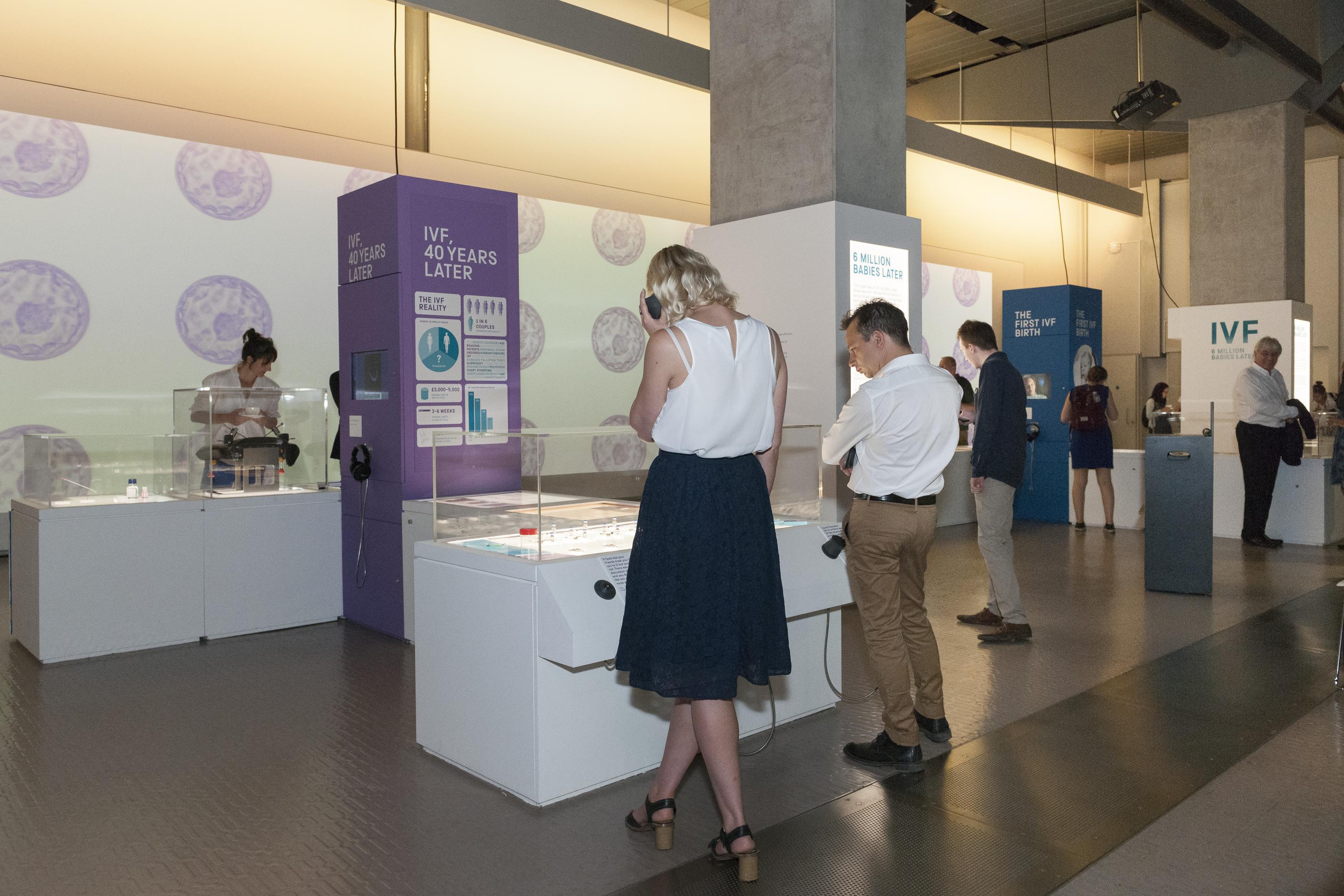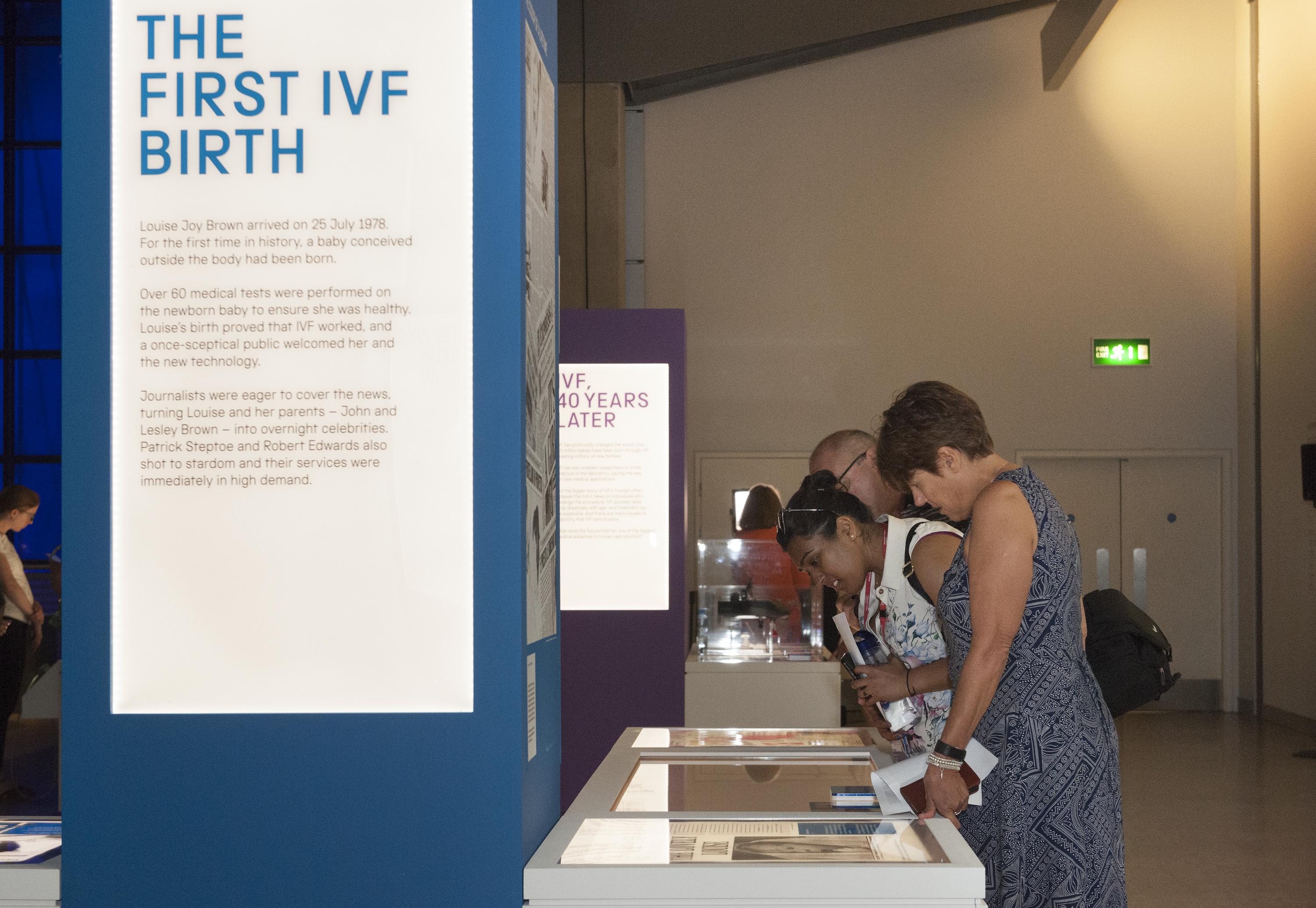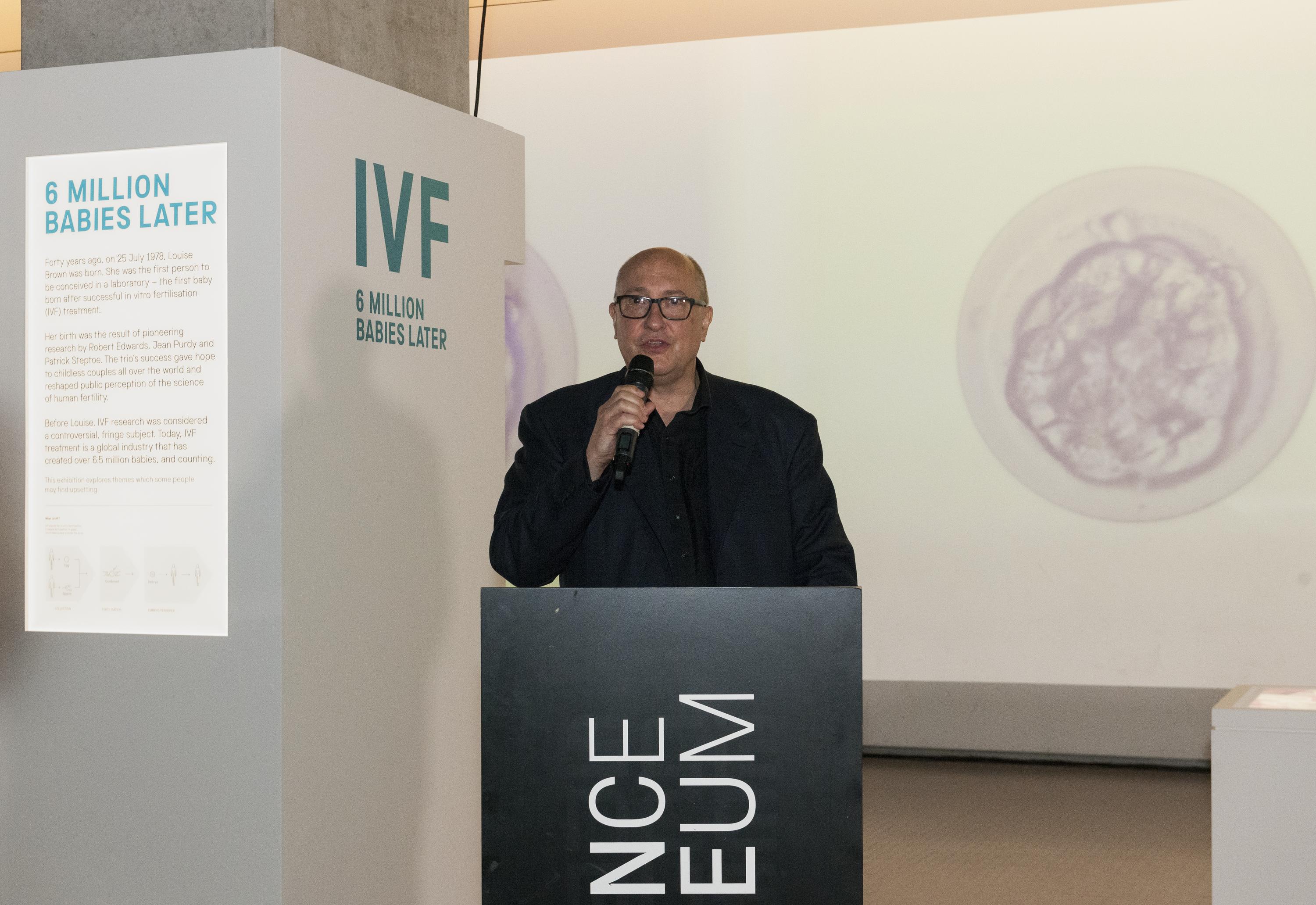By the end of this century, 400 million babies – 3% of the global population – could by one estimate exist as a result of in vitro fertilisation, IVF, according to Sally Cheshire, CBE, Chair of the UK’s independent regulator of fertility treatment.
She was speaking at the launch today of the exhibition IVF: 6 Million Babies Later which celebrates the ‘miraculous’ birth of the very first, Louise Brown, on 25 July 1978 – a landmark in reproductive technology pioneered by British researchers.

This exhibition, curated by Connie Orbach and Ling Lee of the Science Museum, explores the decade of experimentation, hundreds of failed attempts and many setbacks in the quest to treat infertility faced by Robert Edwards, Patrick Steptoe and Jean Purdy, sometimes called the ‘forgotten IVF pioneer’.
‘IVF is just one example of the huge potential the UK has for scientific and clinical innovation, respected the world over and celebrated in the Science Museum’s wonderful exhibitions – today, of course, focused on IVF,’ said Cheshire, Chair of the Human Fertilisation and Embryology Authority (HFEA), who has personal experience of IVF.
‘But it is to Professor Sir Robert Edwards, Dr Patrick Steptoe and Jean Purdy that we owe the most, for developing IVF, persisting until it succeeded and allowing millions of patients after Lesley and John Brown, Louise’s parents, to create their much longed-for families,’ she told launch event attendees in the museum’s Who am I? gallery.
‘I would like to acknowledge Bob and Patrick’s family members here today, to say a very public thank you,’ she said, also praising the Science Museum as a ‘world leader’ in handling complex issues.

‘It is significant today that we celebrate this medical innovation that has changed so may people’s lives, on the same day as the 70th anniversary of the NHS celebrations.’
The UK has reached the milestones of 1 million IVF treatment cycles and 300,000 IVF babies born. Worldwide estimates of the number of children born this way vary from five million to as many as 10 million.
She added that a recent article in Reproductive BioMedicine Online estimated that by 2100, 400 million babies or 3% of the global population could exist by virtue of IVF, including the original IVF babies and their descendants.
IVF was so controversial during the 10-year period in which it was developed by Edwards, Steptoe and Purdy that the Medical Research Council refused to fund it. Much of that money came from an American millionairess, Lillian Lincoln Howell, who herself suffered from fertility problems and remained an anonymous benefactor until her death in 2014. ‘It was not all plain sailing – this exhibition shows that,’ said Cheshire.
Unease about the technology led the then Government to commission an inquiry, chaired by Mary Warnock, to consider the social, ethical and legal implications of IVF and what safeguards were required, said Cheshire (an interview with Baroness Warnock can be seen here).

The Warnock report, published in 1984, identified the need for principles and limits to govern fertility treatment and embryo research, and ultimately paved the way for the Human Fertilisation and Embryology Act in 1990 and shortly after the Human Fertilisation and Embryology Authority (or HFEA for short) in 1991.
‘The ethical lines laid down by Baroness Warnock, such as the 14-day rule for keeping embryos for research, still stand and there has been no “slippery slope”,’ said Cheshire, though scientists have recently developed the ability to grow embryos beyond this limit.
Since then, ‘we have seen embryo testing developed to allow people to avoid passing on serious inherited diseases to any children they might have. The UK was the first country in the world to license ground-breaking mitochondrial donation techniques (see interview here) which allow women who carry the risk of serious mitochondrial disease to avoid passing it onto their children (more can be found out here). We also continue to lead the way in gene editing research (more here).’
‘The 40th anniversary of IVF is a milestone but it feels like we are only in the early days of an exciting and challenging time ahead as medicine and science move on,’ said Cheshire. ‘Only this week we have seen media coverage of the possibilities of an artificial human ovary.’ Other possibilities were discussed recently at the Manchester Science Festival.
Roger Highfield, the Science Museum’s Director of External Affairs, said the exhibition ‘shows how the birth of Louise fuelled the rapid acceptance of a fringe technology that went on to have a huge impact on society, paving the way for embryology, stem cell science and more.’

When it came to ethics, ‘we had to find a middle path between those who felt reproduction was sacred and pragmatists who wanted to understand human reproduction to deal with problems such as infertility.
‘This is also a very human story, of the scientists working in the field and the people undergoing the treatment, and our exhibition brings those stories to the foreground.’
Highfield thanked the many individuals and organisations who helped make this exhibition possible: Katie Dow, Martin Johnson and Kay Elder; Fertility Network UK; Reproductive Sociology Research Group and Magda Zernicka-Goetz Group at The University of Cambridge; Human Fertilisation and Embryology Authority; Bourn Hall Clinic; London Women’s Clinic; and ABC IVF.
Among those present at the launch were Jane Denton, President of the British Fertility Society; Margaret Gilmore, deputy chair of the HFEA who as a cub reporter 40 years ago, had the pleasure of documenting Louise’s birth; Andrew Steptoe, UCL; Robert Edwards’ daughter Jenny Joy; Martin Johnson, Emeritus Professor of Reproductive Sciences at the University of Cambridge; Mark Downs, Chief Executive at Royal Society of Biology; Yacoub Khalaf, Professor of Reproductive Medicine at Guy’s Hospital; Geeta Nargund, Medical Director of Create Fertility, and IVF exhibition participants who shared their own stories with us.
The 40th birthday of IVF and Louise Mullinder (nee Brown) will be celebrated at a special Science Museum Lates on Wednesday 25 July 2018 at 7pm, which also celebrates the 70th birthday of the NHS.
Free tickets are available now for a unique in-conversation event on the 40th birthday of Louise Brown in the Science Museum IMAX Theatre with Louise herself and Roger Gosden, a former doctoral student of IVF pioneer Robert Edwards, and Roger Highfield.
